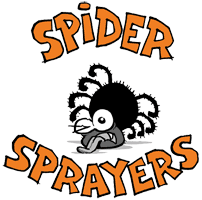
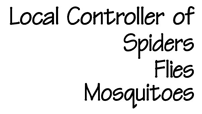
"You don't have to live with them"
|
|
Pests Treated.... |
|
|
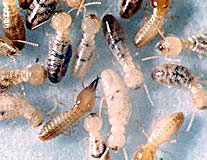 |
The common name for numerous species of
social insects that can damage wooden
structures such as furniture or houses.
Of about 2000 known species, most are
distributed in tropical countries and
some inhabit the temperate regions.
Termites are sometimes referred to as
'white ants' because of their creamy
coloring and ant-like appearance. There
are over 350 species of termites in
Australia of which some 20 species can
damage timber in houses. In nature, they
assist in the recycling of organic
matter and nutrients back to the soil. |
|
|
|
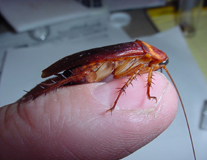 |
There only 6
families of cockroaches found
worldwide, consisting of 4000 species.
Australia has representatives of 5 of
these families but with only 428 species
present. Half of a the cockroaches
in Australia can be found in the
Blattidae family which includes both the
native and introduced species. Go to
our links section to find out more about
the families of cockroaches.
|
|
|
|
 |
Spiders are
invertebrates with a two part body
(cephalo thorax and abdomen), biting
chelicerae and silk glands that
discharge through spinnerets. They have
4 pairs of legs and additional pair of
short appendages (pedipalps) beside the
chelicerae. Eight is not only the number
of legs spiders have. The original
spiders and most still have eight eyes
and if that is not enough spiders still
live today which have the original
complement of eight spinnerets. |
|
|
|
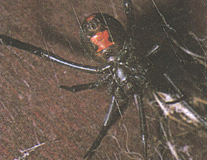 |
Almost too
familiar to need description, mature
female redbacks are jet black spiders
with a variable red stripe on the back
of their spherical abdomen. Their tough,
untidy webs are usually near the ground
with the spider hiding in a shelter in a
corner, often guarding her round woolly
egg sacs. Immature females are smaller,
usually brown with whitish markings.
Males are rarely seen; they are small
and brown with red and white markings. |
|
|
|
 |
Ants are
social insects which live in nests. The
nests vary in size depending on their
age and the species of ant. They are
generally found in the ground, in wood
or under rocks, although ants can also
nest in walls, fireplaces, under paths
and in buildings. They are most active
from October to March.
Ants are a very
successful insect group with over 1200
species occurring in Australia. All
species can be beneficial to the
environment. Some eat insect Pests such
as termites, their nests improve the
soil, they quickly recycle nutrients
back into the soil and they are food for
a wide range of native birds, reptiles
and other small animals. |
|
|
|
 |
There are
16 different families of fleas
worldwide, consisting of about 2380
species. In Australia 9 of these
families are represented with just
90 different species. About half of
the endemic species that occur in
Australia are found in the
Pygiopsyllidae family. The Pulicidae
family contains many of the
introduced fleas such as the cat,
dog and human flea, as well as some
native species. Go to our links
section to find out more aboutout
more about the different families of
fleas. |
|
|
|
 |
Lice are small, wingless insects
that are parasites of birds and
mammals. They are usually less than
10 millimetres in length and are
rarely seen without the aid of a
microscope or magnifying glass. Lice
are short lived and usually host
specific.
A few species of
lice have adapted to live and feed
on humans, such as the head louse (Pediculus
capitis), the eggs of which are
commonly called nits and the body
louse (Pediculus humanus).
|
|
|
|
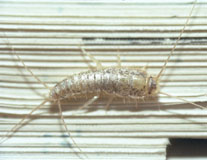 |
There
are only 4 families of
silverfish found worldwide,
consisting of about 370 species.
In Australia just 2 of these
families are represented with 28
species present. The 2
Australian families are easily
separated from others found
throughout the world as the
Nicoletiidae family are eyeless
and the Lepismatidae have only
small compound eyes. Go to our
links section to find out more
about about the families of
silverfish. |
|
|
|
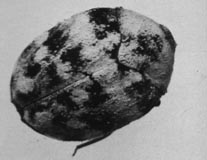 |
Carpet beetles
damage fabrics, furnishings and clothing
that contain wool, silk, hair, bristles,
fur, or feathers. Synthetic items are
resistant to attack, but mixtures of
synthetic and natural fibres can be
damaged. The natural habitats of carpet
beetles are nests of birds, rodents,
insects, and spiders. The beetles are
pollen feeders and can be found in large
numbers in flowers; they can be brought
into the house in cut flowers. |
|
|
|
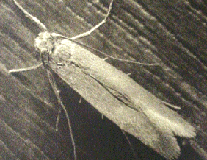 |
Although less
common than carpet beetles, clothes
moths are commonly experienced in
similar environments to carpet beetles,
namely woollen materials, felt, fur and
other materials of animal origin.
The two most
common species of clothes moths are the
case making clothes moth (Tinea
pellionella) and the common clothes moth
(Tineola bisselliella).
|
|
|
|

